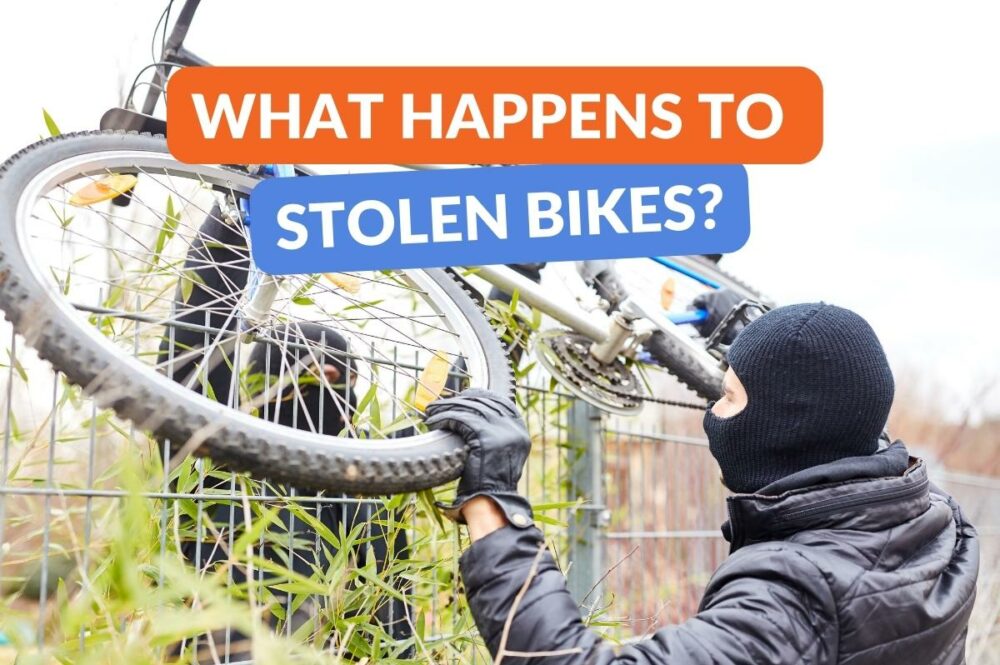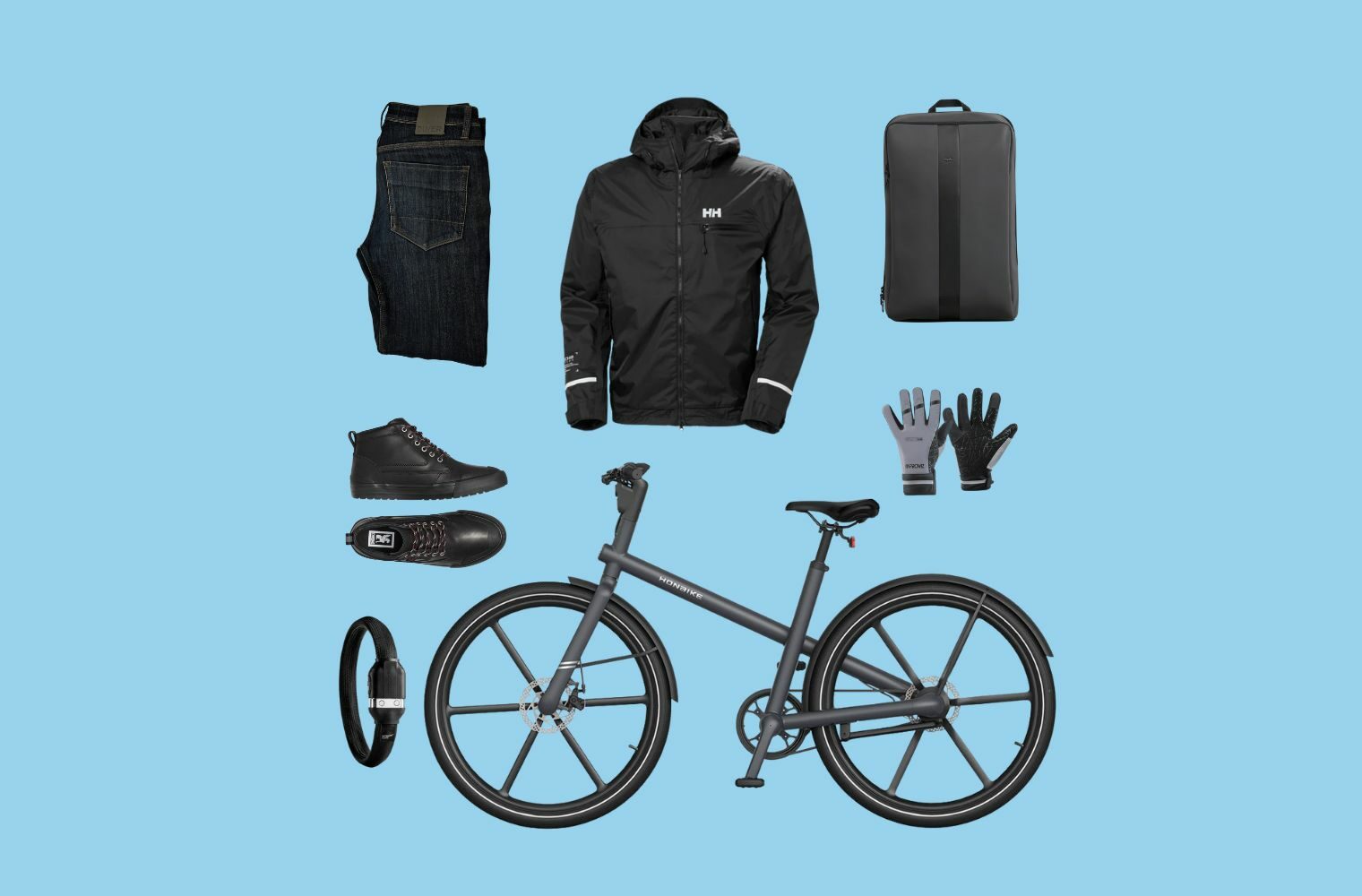This post may contain affiliate links, which help to keep Discerning Cyclist rolling. Learn more.
Bicycles hold a special place in our hearts, offering freedom, connection, and a sustainable mode of transportation. With the increasing costs of running a car, more and more people are swapping in four wheels for two.
Unfortunately, there exists a dark underbelly of bike theft, where stolen bikes become pawns in the unscrupulous game played by opportunistic thieves.
In this article, we’ll look at what happens to your bike after it is stolen, including many interesting and surprising statistics. We’ll also explore the other, neglected elements of the aftermath of bike theft.
Why are Bikes stolen so frequently?
Bicycle theft is incredibly common worldwide, and there’s a few key reasons for it.
Firstly, bicycles are ultimately fairly easy to steal. Bikes are often left unattended, are inadequately secured or are kept in places with poor visibility. Adding to this that a stolen bicycle is essentially it’s own getaway vehicle, it’s understandable that so many are taken.
Secondly, they’re easy to shift afterwards. With the proliferation of sites such as Gumtree or Craigslist, it’s easy to steal and then subsequently relist whole bikes or components for a quick profit. Due to lack of registration or identification, it’s also difficult to prove ownership.
Lastly, bike thieves know that people won’t often do anything about it. As opposed to motor vehicle theft, victims of bicycle theft often become apathetic about the crime and don’t see it worthwhile as reporting. By many, it’s seen as an inevitability of owning a bicycle.
Essentially, bikes are stolen because there’s little risk of being caught coupled with a high reward.

Statistics on Bike Theft
- In the US, a bike is stolen roughly every 30 seconds, totalling around 2 million bicycles per year. (SBI)
- Bicycle theft is at least twice as common as motor vehicle theft. (SBI)
- Approximately 1.3 million bicycles are stolen annually in the EU-27. (ECF)
- Almost 1 in 10 people don’t see bike theft as a ‘crime’. (ONS)
- The average cost of a stolen bike in the UK is around £350.(ONS)
- The majority of stolen bikes in Amsterdam actually remain in the local area. (MIT)
- 90% of reported bike thefts go unsolved. (BBC)
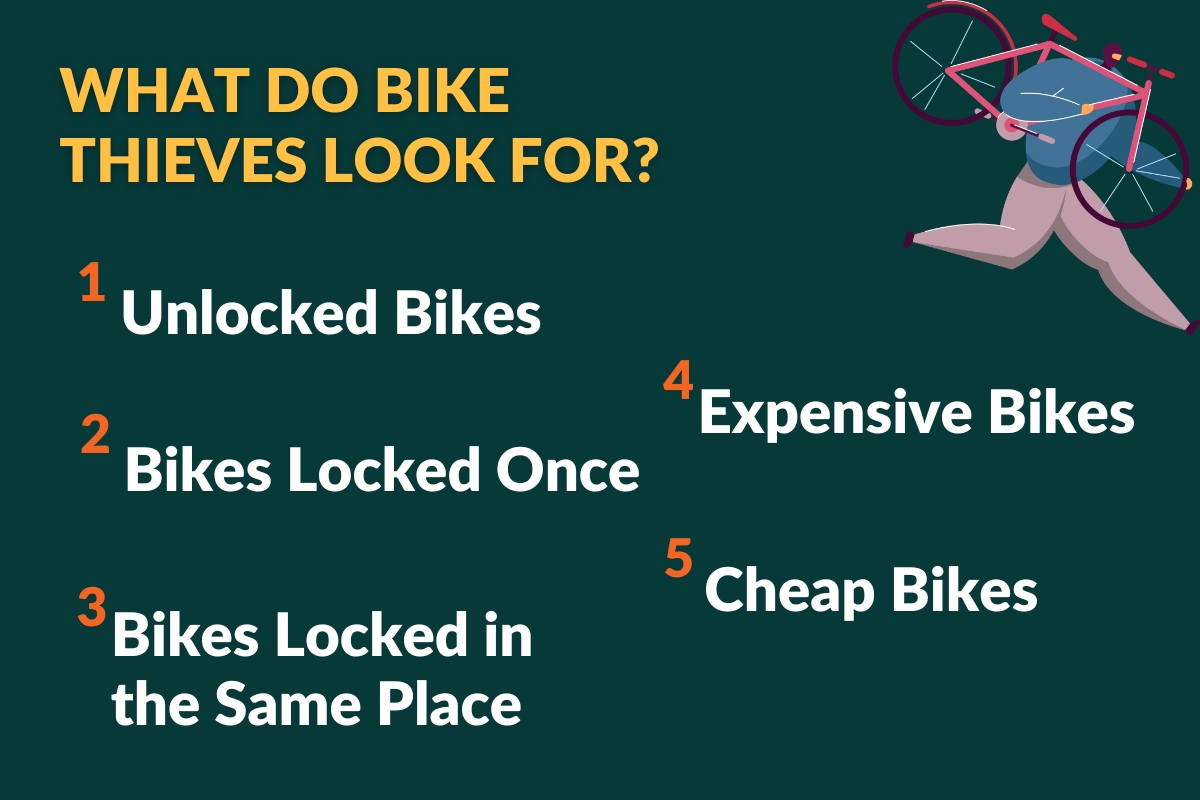
What do Bike Thieves Look for?
Bikes thieves look for a number of things when choosing a bike to steal, depending on whether they’re part of an organisation dedicated to bike theft or whether they’re simply an opportunist who can’t pass up the chance.
- Unlocked Bikes: Bikes which are unlocked (or poorly locked) are most frequently the victims of bike theft.
- Bikes Locked Once: A bike locked once, especially with a weak lock such as a thin chain or cable lock, are easily cut with a simple pair of cutters.
- Bikes Locked in the Same Place: Bikes which are continually locked in the same place are easy target because the patterns are predictable.
- Expensive Bikes: Bikes which have a high resale value, such as e-bikes or high-end road bikes, are stolen because, well, they’re worth more.
- Cheap Bikes: Interestingly, where cheap bikes are less likely to be reported as stolen, they’re also often taken. They’re ultimately a lower risk choice for thieves.

What Happens to Bikes after they are stolen?
1. They’re Sold
The usual aim of bike theft is for subsequent resale. Bikes are high-value, low-risk targets for potential thieves.
Whole bikes are easy to resell, especially if the thief travels to a different locality to do so. It’s too easy to take a few photos and list it online for a quick buck.
And it isn’t always on an individual basis. Bike theft is, more often than you might think, organised crime, and is committed on a large scale by groups rather than just in isolated incidents by individuals. Bikes are often stolen, transported and sold en masse.
2. They’re Used to Commit Further Crimes
According to recent research, the British Transport Police have noted that bikes which are stolen are increasingly used to commit further crimes.
Stolen bicycles have become the vehicle of choice for many criminals who often use the bike to commit further crimes, such as “robberies and snatches“.
These bikes are then subsequently abandoned and unfortunately there’s little that can be done to recover them efficiently.
3. Kept
Bike thieves aren’t necessarily stealing for financial gain, and in some instances a bike is stolen for personal use.
It seems everyone has a friend who’s seen their stolen bike out on the street and attempted a vigilante style recovery.
Thieves don’t always use the bike straight away in the local area, and you might expect to see it in public again once the criminal deems it ‘safe’ to ride it in public.
4. Broken Down
Bikes are often broken down for their parts, which are subsequently sold on online marketplaces or to dodgy-dealerships.
Rather than risk being caught selling a whole bike, more expensive bikes, such as e-bikes, performance mountain bikes or high-end road bikes are broken down and sold for components.
The problem is that this is more difficult to trace, meaning only the most observant of victims can find their beloved bike parts again.
5. Recovered
Despite what you might hear about police inactivity when it comes to bike theft, according to some sources almost 50% of stolen bikes are recovered by law enforcement agencies.
The main problem, however, is that only a small proportion of these bikes are returned to their rightful owners.
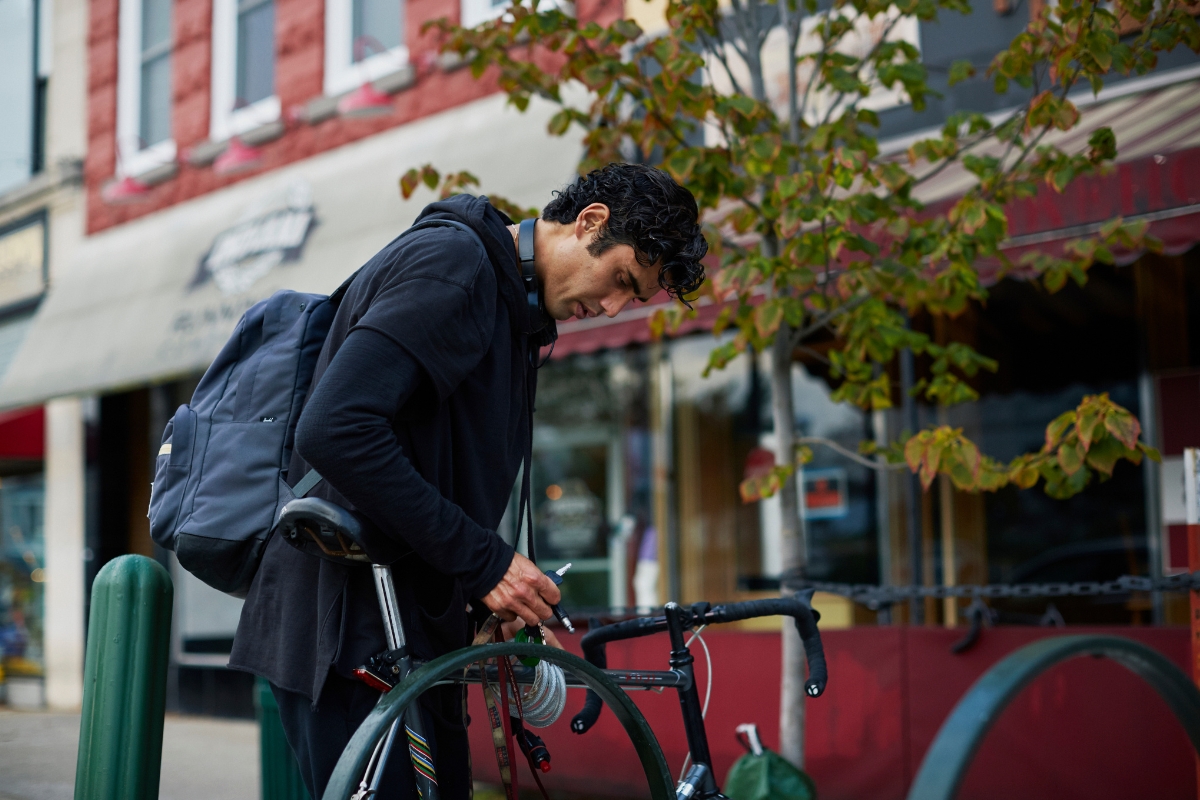
What Happens to the Victims of Bike Theft?
Whilst we’ve already looked at what happens to stolen bikes, there is an aspect which is often neglected when it comes to bike theft; the victims themselves.
Having a bike stolen is a traumatic experience for anybody, leaving the victim feeling frustrated and helpless. Whilst it can spur people to report the finding or prompt a personal recovery process, often it just leads to people feeling apathetic about the whole event.
- 80% of people are annoyed by bike theft. (ONS)
- Only 26% of people are shocked by their bike being stolen. (ONS)
- 3% of people express a difficulty in sleeping after the event. (ONS)
- 3% of people experience depression as a result of their bike being stolen. (ONS)
- 66% of people who have been a victim of bike theft cycle less. (Litelok)
- 25% of bike theft victims give up cycling entirely. (Litelok)
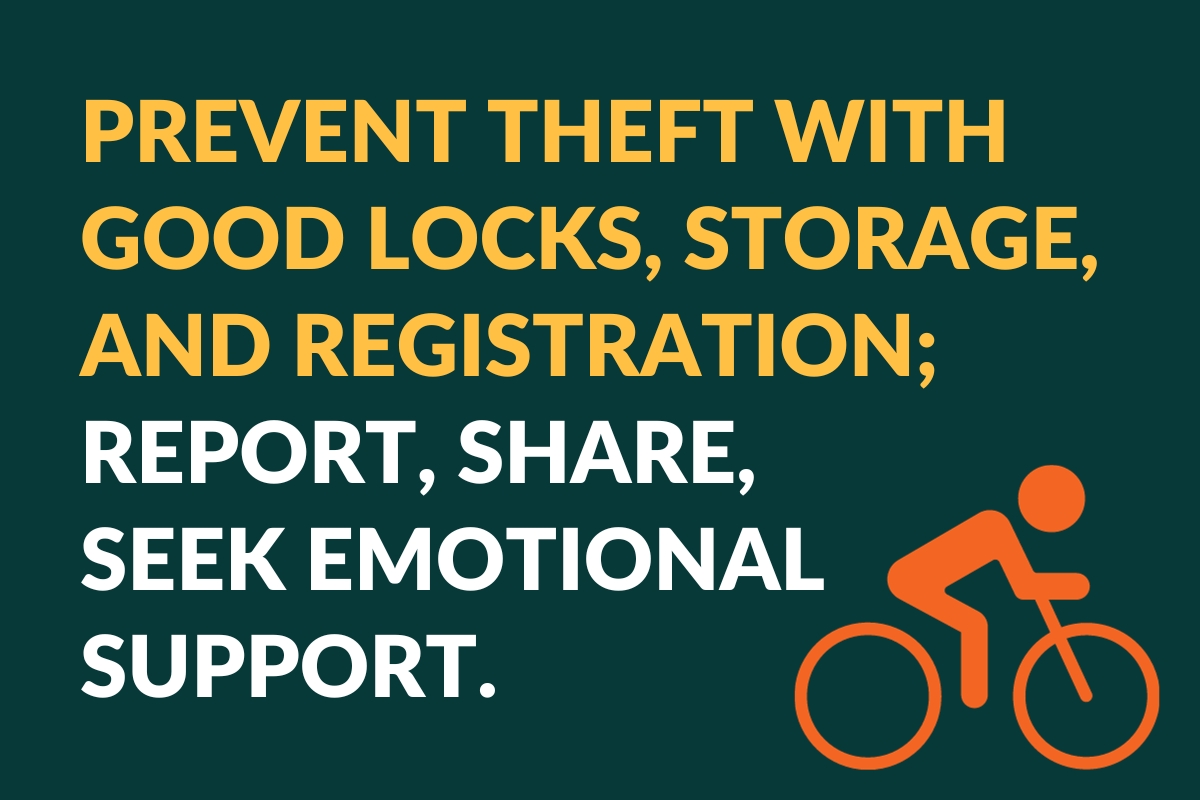
How to Deal with Bike Theft
The best way to deal with bike theft is to prevent it from happening. There are unfortunately no foolproof ways to keep a bike from being stolen, but taking adequate protections such as locking it well, storing it well and registering it with local authorities (and insurers) are all great ways to start.
Whilst bicycle theft is a continual problem across the world, there are ways to deal with it once it’s happened. Reporting the theft to the police using as much evidence as possible should always be the first thing that you do. In addition to this, you should post it on any social media platforms and in your local community so that others in the area can keep an eye out for you.
It’s ok to feel emotional about a bike being stolen, especially if it has sentimental value to you. Remember, it’s a perfectly natural reaction and you should allow yourself time to grieve, especially if it has caused any deeper anxieties. Reach out to your friends, your family, and your local cycling community for support.
